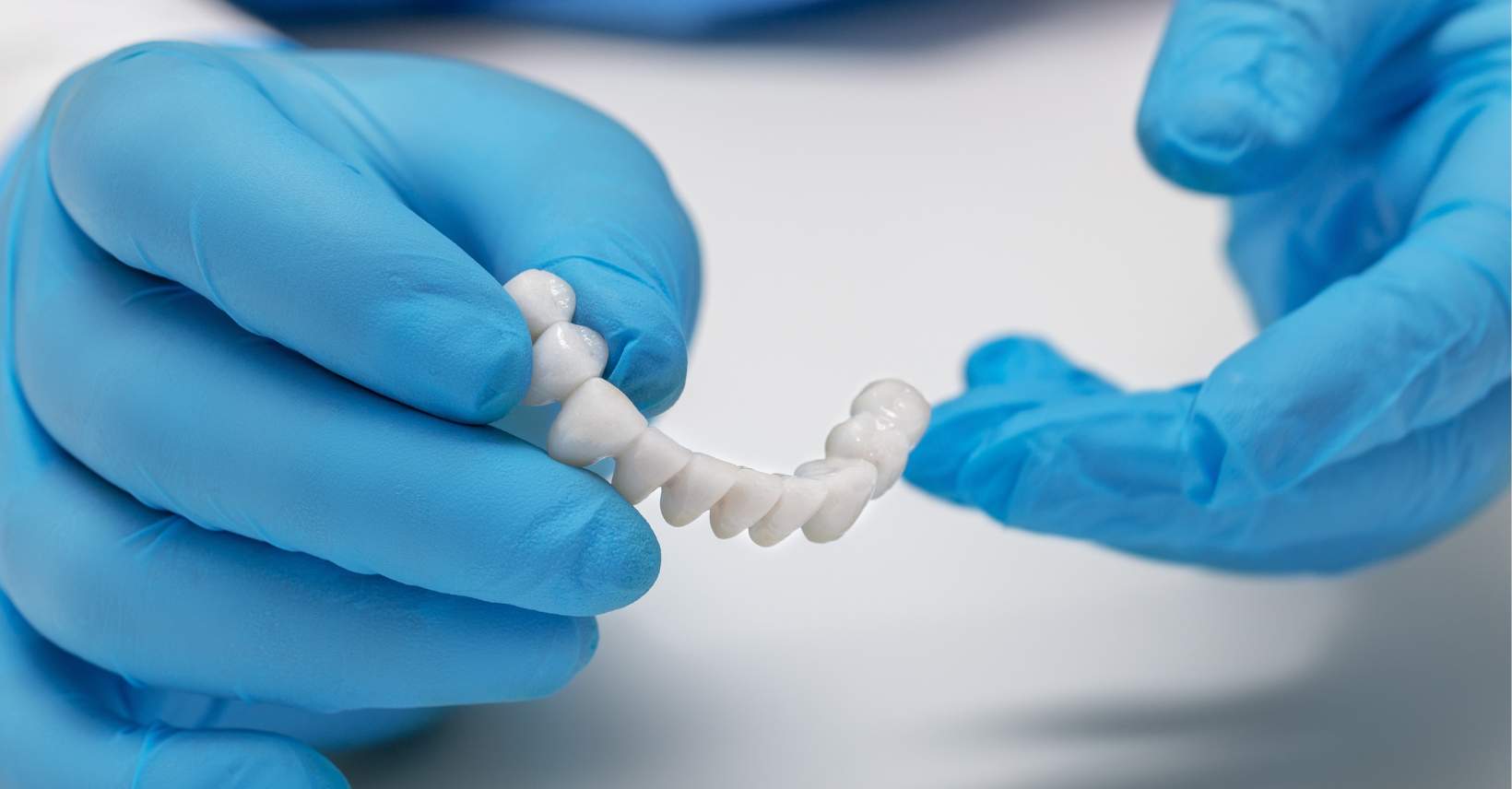Dental Implants Surgery

Dental implants have been demonstrated to be successful in helping people with tooth loss improve their quality of life.
Successful tooth replacement can enhance and restore the patient’s quality of life by improving the bite and providing a better eating experience, and it can also last a long time. Dental implants have commonly used metallic and ceramic materials such as titanium, glassy carbon, and zirconia; however, each material has limitations related to osseointegration and differences in mechanical properties between natural bone and the implant, limiting its long-term survival and stability.
Dental Implant Surgery
Implants are artificial roots that are surgically implanted into the bone to replace missing natural roots. Over several weeks or months, a strong link is developed between the implants and the bone. Crowns, bridges, and dentures are put over the implants, which give a strong base. An abutment is a connection between the new tooth and the implant.
The new teeth are incredibly hard and feel as natural and comfortable as your original teeth because of the great stability of the implants. They may also be made to appear to be quite lifelike. Implants also help to prevent bone loss.
How is a Dental implant done?
This entails inserting the titanium implant into the jaw bone. The location where the implant will be put will be numbed with a local anesthetic. A tiny incision in the gums is made to reveal the underlying jaw bone, which is subsequently prepped for the implant. To guarantee bone health and optimum results, this must be done softly. You will feel some vibrations throughout this procedure, comparable to when you have a tooth filled. The implant is then placed in the prepared location. Stitches are then used to reposition the gums around the implant.
Additional bone augmentation treatments may be required prior to implant implantation, depending on your condition. The amount and quality of the bone where the implant will be put are crucial to its success. The jawbone that is connected with lost teeth atrophies or is resorbed over time. This frequently results in a situation where the quality and quantity of bone available for dental implant insertion are inadequate.
- Sinus lift surgery
Due to insufficient bone quantity and quality, as well as its closeness to the maxillary sinus, the rear section of the upper jaw has historically been one of the most challenging sites to effectively insert dental implants. A sinus lift includes raising the sinus membrane and grafting a bone graft to the sinus floor. Sinus augmentation has been demonstrated to significantly improve the odds of long-term implant success.

- Ridge-augmentation
In extreme situations, the jaw bone has resorbed to the point where implant placement is difficult. To improve ridge height and/or width, a bone transplant is required.
Depending on the individual’s health, these operations may be performed independently or jointly.
There are various places on the body where bone may be obtained for transplantation. Bone grafts can be removed from within the mouth, from the chin or third molar (wisdom tooth) region, or from behind the final tooth in the upper jaw. Animals or manmade materials can also provide other supplies of bone.
Dental Implant Structure and Function

A dental implant’s body is made up of three parts that serve various purposes:
- The implant (or screw) acts as a prosthetic root for the tooth.
- The abutment is the post that connects the implant screw to the crown.
- The crown is the “artificial” tooth that sits on the abutment. Crowns are constructed of porcelain, a tooth-colored material that mimics the form and appearance of your real teeth.
Types of Dental Implant
- Single Tooth Implant
- Implant-Supported Bridge
- All on 6 dental implants
- 3 on 6 dental implants
Warranty for dental implants
All implants performed by our clinic come with legal lifetime warranties. The patient gets a warranty card for the implant utilized following therapy.
What is a Full Mouth Dental Implant?
If you have lost all of your teeth in one jaw or both, a full-mouth dental implant is the best option. This is one of the most challenging dental treatments to perform. Many individuals can benefit from a full mouth treatment with dental implants if all of their teeth need to be replaced. One of the few ways to totally restore your original teeth’s appearance, comfort, and function is with a full mouth dental implant operation. In most cases, a full-mouth dental implant surgery includes the following steps: The diagnostic and planning stages: X-rays, CT scans, diagnostic mock-ups, virtual planning, and smile design are all included. Typically six to eight implants in the upper jaw are used for this procedure. The lower jaw is implanted with four to six implants. constructing permanent yet temporary overpasses Porcelain teeth are linked to these implants with screws or dental cement and are long-lasting and lifelike in appearance.
How Painful is Dental Implant Surgery?
The discomfort felt during implant installation is often comparable to that felt following tooth extraction.
The majority of implants are just put under local anesthesia. Sedation can be provided for more fearful individuals, and if major surgery is necessary, full anesthesia may be indicated.
When the numbness goes off after dental implantation, the patient may experience slight discomfort. People who have had the operation believe it is less painful than tooth extraction.
Every once in a while, a few people face serious discomfort following surgery. This discomfort might be caused by an incorrectly fitting implant or an infection.
Most folks find that their recuperation is not nearly as unpleasant as they anticipated.
Discomfort can also be felt in the chin, cheekbones, or behind the eyes, depending on where it is positioned. Occasionally, patients remark that the outcomes are well worth the effort.
People can expect some swelling, but your dentist may prescribe antibiotics and painkillers to treat the pain and swelling. From the 3rd day after the procedure, the swelling and pain will begin to decrease. Within 14 days, the patient can be painless and the implant can finally heal well. If the pain and swelling persist after the 14th day, it may be a sign of an infection and the patient may need to see a dentist immediately.
Book A Free Consulatation
Useful Links
Laminate Veneers
Laminate veneers, also known as porcelain veneers or dental veneers, are thin dental ceramic casings. They are custom-made to suit over the front surface of your teeth, enhancing their appearance and your smile as a whole. Laminate veneers can address a variety of cosmetic issues, such as discoloration, fractured or

Zirconium Crowns
Zirconium crowns are a popular option for patients seeking long-lasting, lifelike dental restorations. These crowns are made from zirconia, a robust and biocompatible material, and offer superior aesthetics and strength. Zirconium crowns, with their translucent appearance, closely resemble the natural color and texture of your teeth, resulting in an attractive

Dental implant in Turkey
When it comes to dental implant costs, it’s important to know about the quality and alternatives available. You need to find out how much dental implants cost in Turkey first. Cost for a dental implant in Turkey Going to Turkey for a dental implant saves you the most money and

Dental Implants Surgery
Dental implants have been demonstrated to be successful in helping people with tooth loss improve their quality of life. Successful tooth replacement can enhance and restore the patient’s quality of life by improving the bite and providing a better eating experience, and it can also last a long time. Dental

